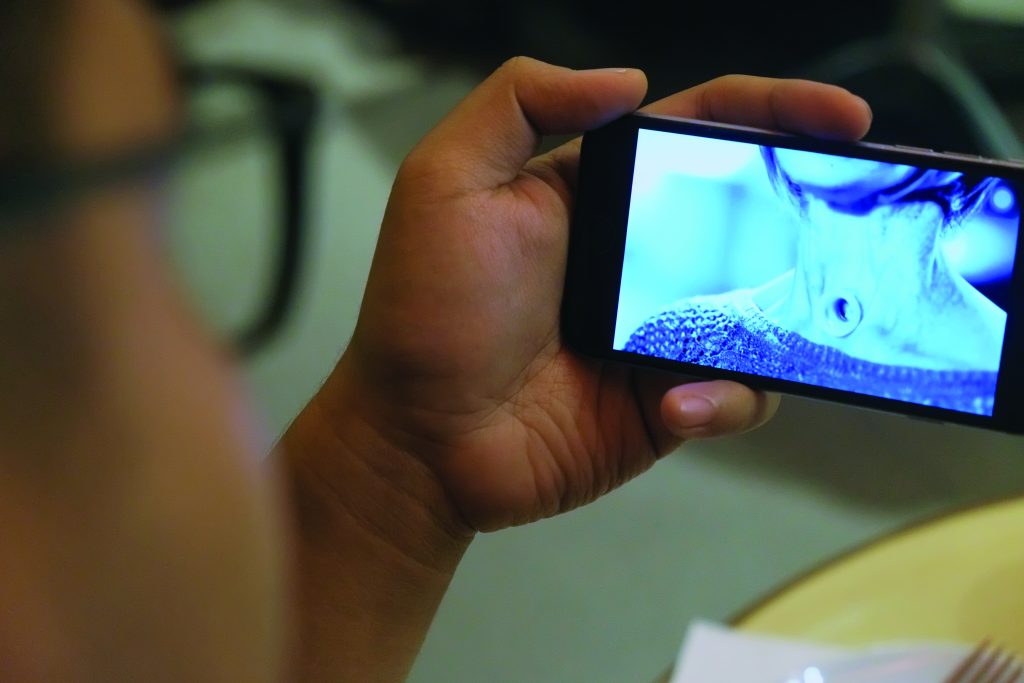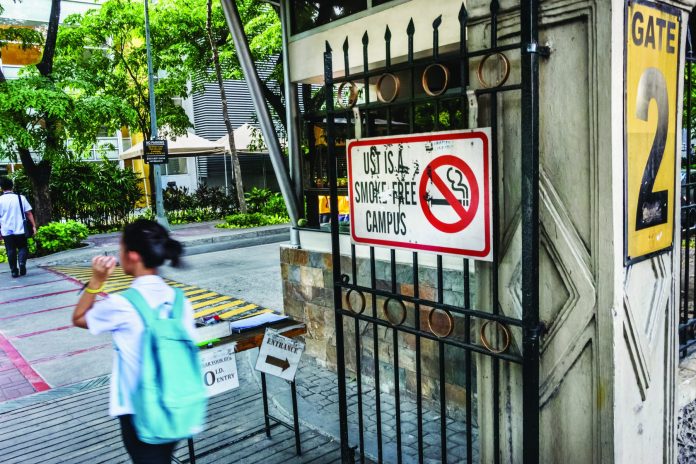Facing the challenge of ending tobacco use in the Philippines
Text and Photos Faizza Tanggol/World Health Organization
Once they started smoking, it was difficult to stop. From the first puff of cigarette smoke, Joey, 58, and Clark (who asked to be quoted under a pseudonym), 29, continued smoking, until their health deteriorated.
A heavy smoker for nearly four decades, Joey nearly lost his life to cigarettes. In 2014, he felt his legs prickle, go numb, and turn purple in a matter of hours. In the emergency room, Joey was informed that both his legs had to be amputated. He had peripheral vascular disease – or Buerger’s disease – which causes the blood vessels to clot. The condition is strongly associated with tobacco use.
“At that point I already accepted what was going on, but I was hoping that one leg would be saved,” explains Joey. “I was surprised when I woke up at the ICU after hours and saw the other leg was intact. I cried because I was overjoyed.”
Joey quit smoking after his amputation. He has been smoke-free for three years.
At that point I already accepted what was going on, but I was hoping that one leg would be saved. I was surprised when I woke up at the ICU after hours and saw the other leg was intact. I cried because I was overjoyed.
– Joey, 58, former smoker

Clark has been an on-and-off smoker for eight years. He stopped smoking when he began experiencing difficulty in breathing. A year later, he still had shortness of breath. He was diagnosed with HIV.
“Apparently, my breathing problem was a symptom of my HIV,” he shares. “I said to myself, as I thought the cigarette was not the reason, that maybe I’ll just go back to smoking.” Clark started smoking again, but recently quit again.
At the time of the interview for this article, he was smoke-free for three weeks and counting.
Tobacco use has serious health consequences – even more so for people living with HIV. It increases the risk of cancer, heart disease, tuberculosis, and stroke, and can lead to disability or death.
Related: An Invisible Disease
Related: The Last Frontier
Related: The Silent Epidemic
According to the 2015 Global Adult Tobacco Survey, there are an estimated 15.9 million smokers in the Philippines – a relative reduction of 20 percent in five years. The Philippine Department of Health, Department of Finance, and World Health Organization (WHO) estimate that over one million Filipinos have quit smoking, attributing this decline to a number of tobacco control interventions in place.
The Philippines is doing well in reducing its tobacco usage rates compared to other countries in the western Pacific region.
The Philippines’ government, supported by the WHO, has implemented a number of tobacco control measures – including a recent executive order signed by President Rodrigo Duterte in May 2017 that established smoke-free environments in public places; a tobacco quit line has also recently been launched by the Health Department and the Lung Center of the Philippines to offer support to people looking to quit. The country has also worked towards implementing laws relating to graphic health warnings and taxation on tobacco products.
After his amputation – before he quit smoking – the taxation on tobacco helped Joey reduce the number of cigarettes he smokes per day. He sees the Sin Tax Law – which was implemented in 2008 – as a good thing.
“It became more expensive, so I also lessened the number of packets I bought. From three packs a day, I was buying one and a half,” he says.

Clark is still struggling to quit smoking once and for all; he has constant cravings. “I don’t like seeing the image with the tube in the throat… That makes me really afraid,” he says. “I’ve been feeling something in my throat which I haven’t had time to have checked. But I intend to one of these days.”
Clark is open to trying out other means of staying cigratte-free, including texting the mobile cessation hotline operated by the Lung Center of the Philippines. “I shouldn’t have started smoking. If I did not start puffing, my life would have been easier,” says Clark.
I don’t like seeing the image with the tube in the throat… That makes me really afraid. I’ve been feeling something in my throat which I haven’t had time to have checked.
-Clark (pseydonym), former smoker
Joey, on the other hand, has no regrets about where smoking has led him. Today, he speaks out as an anti-tobacco advocate.
“Anti-tobacco advocacy is very important because as long as [people] can avoid smoking, they should do
so,” he shares. “Since it isn’t too late for others, I want to impart my experience and hope to persuade others to avoid smoking.”
For more stories from this issue, get your copy of Asian Geographic Issue 127, 2017.











